The Emergence of the Global Irish-Speaking Population in the Nineteenth Century
Implications and Impacts
Pádraig Ó Beirn (1857-1927)
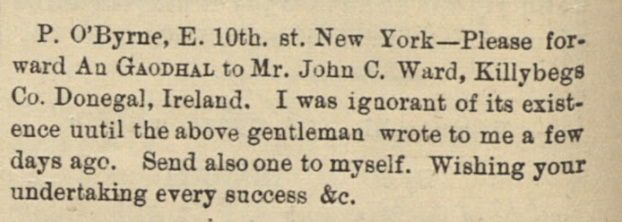
Source: An Gaodhal, April 1882
Máire Ní Thuathail (1871-1954)

Source: "Coláiste Connacht," colaistechonnacht.com, 2017
Máire Uí Dhuinnshléibhe ("Méiní," 1876-1967)
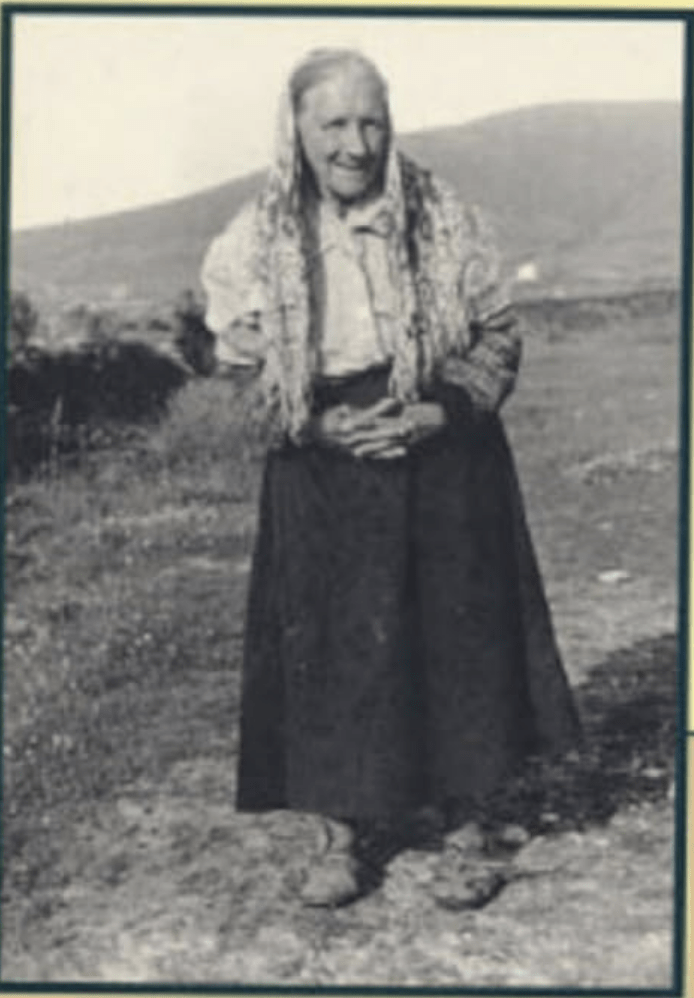
Source: Leslie Matson, Méiní: The Blasket Nurse (1996)
Tomás “Bán” Ó Concheannain (1870-1961)

Source: Tom Kenny, "Tomás Bán Concannon," Kennys.ie
Irish Speakers, 1830-1910: A Global Population
-
Approximately 1 in 3 Irish speakers resided in the United States by 1910: 21% of 1.37 million Irish-born in that year
-
Of these 250,000 - 275,000 in the U.S., over half lived in the stretch between Massachusetts and Pennsylvania (NY, NJ, PA, CT, MA)
-
By 1900, approximately 4 out of every 10 speakers of Irish resided outside of Ireland, or over 400,000 individuals
Difference between % of Full Population under 20 and
% of Irish-Speaking Population under 20, 1851-91
| Province | 1851 | 1871 | 1891 |
|---|---|---|---|
| Munster | .14 | .26 | .31 |
| Ulster | .14 | .15 | .16 |
| Connacht | .10 | .20 | .25 |
| Leinster | .36 | .38 | .36 |
Source: L. A. Clarkson, et al., Database of Irish Historical Statistics: Age, 1821–1911 (Colchester, Essex: UK Data Archive, 1997), https://doi.org/10.5255/UKDA-SN-3574-1; L. A. Clarkson, et al., Database of Irish Historical Statistics: Language, 1851–1911 (Colchester, Essex: UK Data Archive, 1997), http://doi.org/10.5255/UKDA-SN-3573-1.
| Province | 1851 | 1871 | 1891 |
|---|---|---|---|
| Munster | .14 | .26 (-.12) | .31 |
| Ulster | .14 | .15 | .16 |
| Connacht | .10 | .20 (-.10) | .25 |
| Leinster | .36 | .38 | .36 |
Source: L. A. Clarkson, et al., Database of Irish Historical Statistics: Age, 1821–1911 (Colchester, Essex: UK Data Archive, 1997), https://doi.org/10.5255/UKDA-SN-3574-1; L. A. Clarkson, et al., Database of Irish Historical Statistics: Language, 1851–1911 (Colchester, Essex: UK Data Archive, 1997), http://doi.org/10.5255/UKDA-SN-3573-1.
Difference between % of Full Population under 20 and
% of Irish-Speaking Population under 20, 1851-91
- f. 1881 in Brooklyn; monthly
- Publisher: Micheál Ó Lócháin
- Bilingual, but first newspaper in the world published with significant Irish content
- Precursor to Gaelic Union’s Irisleabhar na Gaedhilge and Gaelic League’s An Claidheamh Soluis
An Gaodhal Newspaper
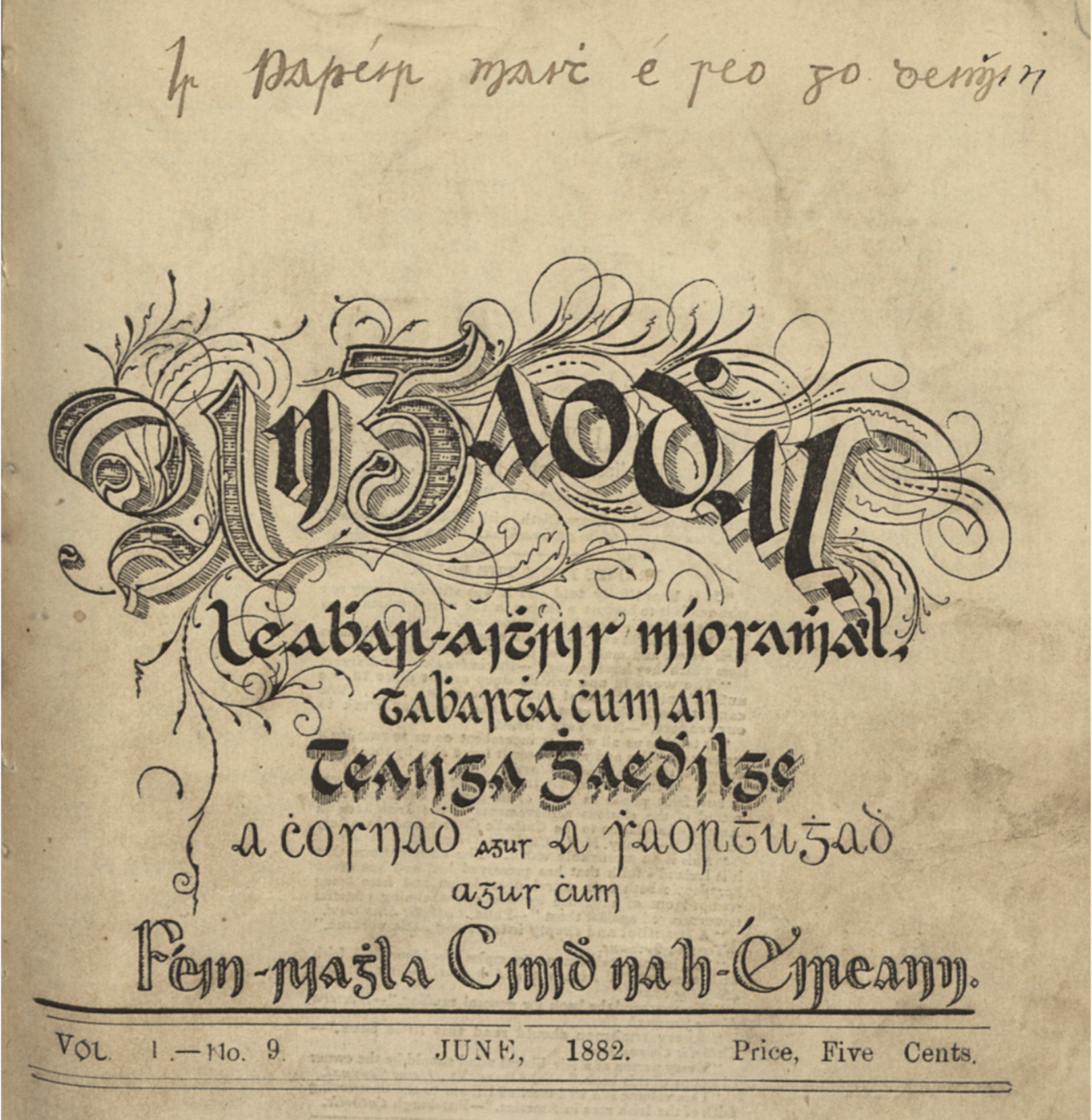
- Galway-born, farming family
- Schooling in Archbishop MacHale’s independent schools of mid century; likely native Irish speaker
- Possibly a newspaper reporter, possibly an RIC constable, prior to arrival in Brooklyn by 1870 at latest
- In America, teacher and real estate agent; founded Irish-language class for adult learners taught in Brooklyn in 1872
Micheál Ó Lócháin, 1836-1899
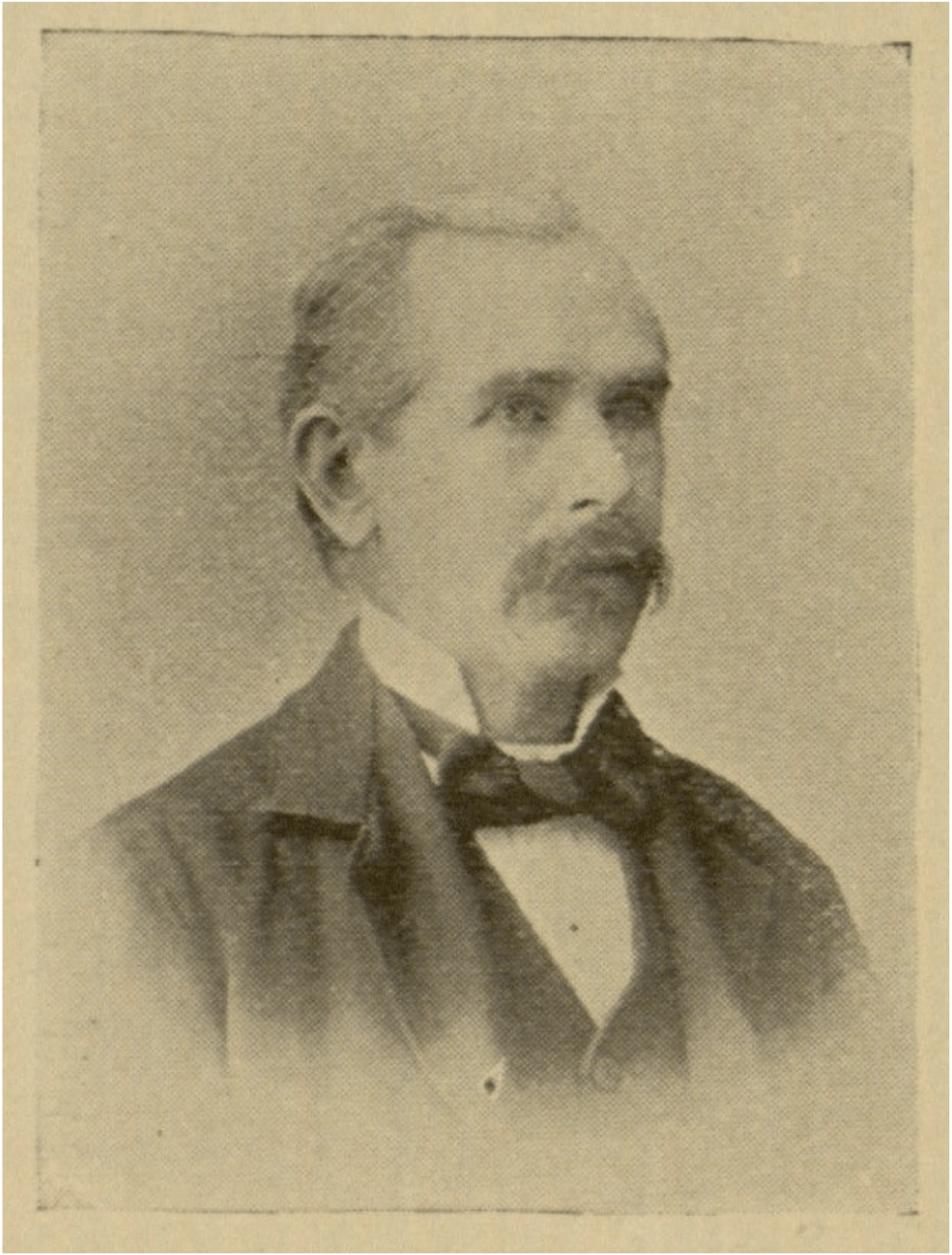
- 1857: First “Our Gaelic Department” in Irish-American
- Two waves of Gaelic columns: late 1850s; 1870s
- Celtic Magazine, Celtic Monthly, Citizen, Donahoe’s, Emerald, Irish Echo, Irish People, Monitor
(plus in Ireland The Nation, Tuam News, and more…)
Irish Language in America: Print & Societies
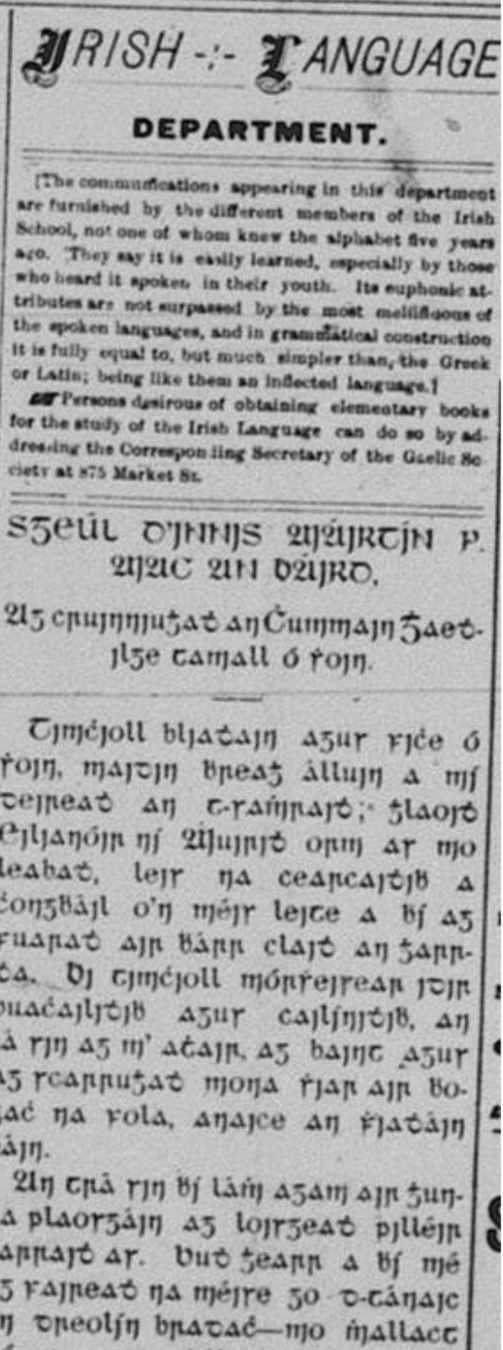
- Murphy manuscripts: most complete print set of An Gaodhal
- Father Daniel Murphy (b. Sligo, 1858-1935): folk/song collector, with J.J. Lyons, in PA
- U of G digitized assets (2022)
- Murphy annotations
New York University / Hardiman Library An Gaodhal Project

- Train bilingual OCR (Optical Character Recognition) model on Roman-character English + chló Gaelach
- Produce highest-quality machine-readable corpus of ~2900 pages & 1.8 million words, 1881-1898
- Entity recognition: persons, places, texts (poems, songs); identify and transcribe annotations
- Data repository for files; enhanced metadata for Hardiman Digital Library
Current-Stage Project Goals
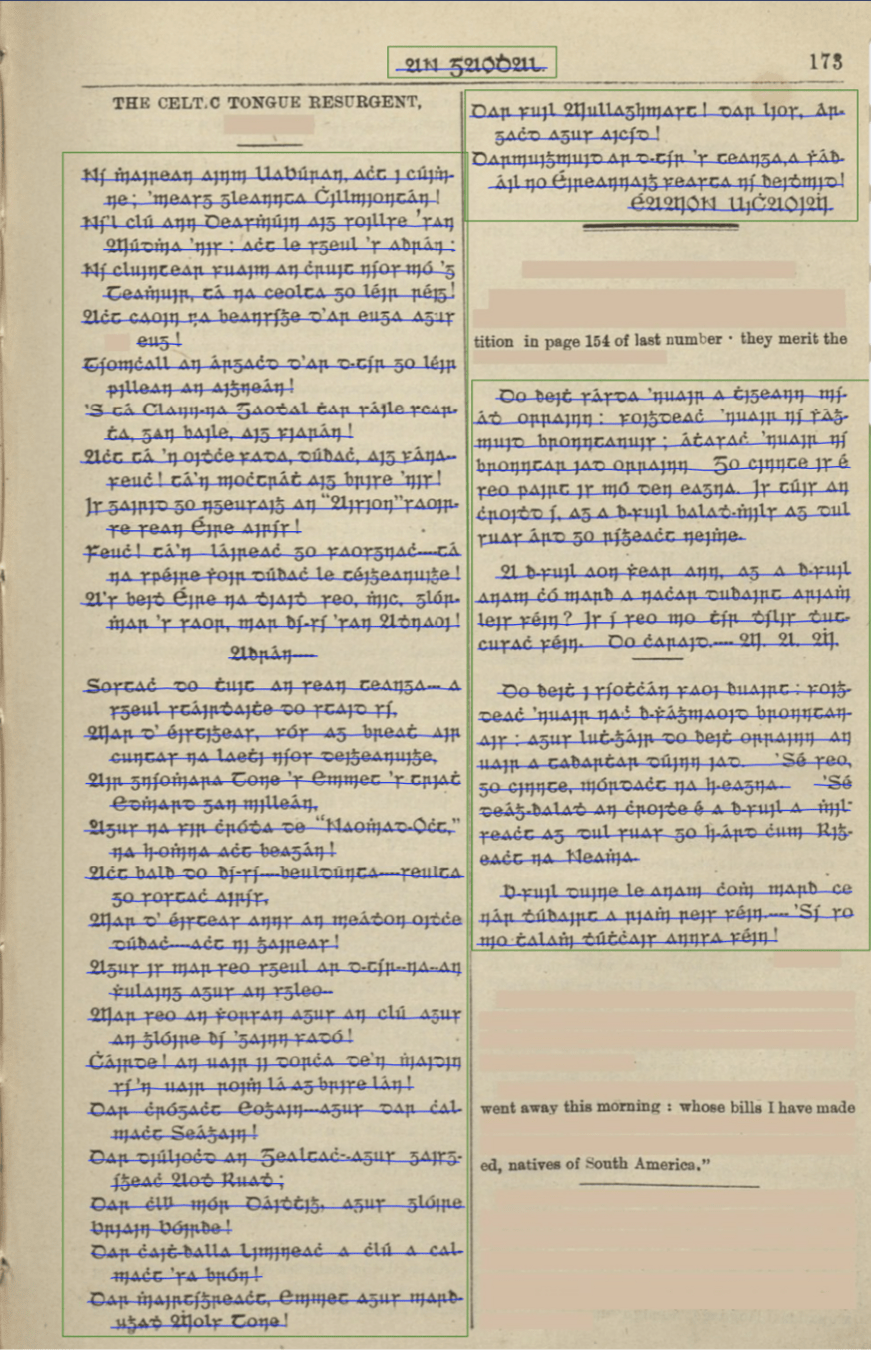
Current-Stage Project Challenges
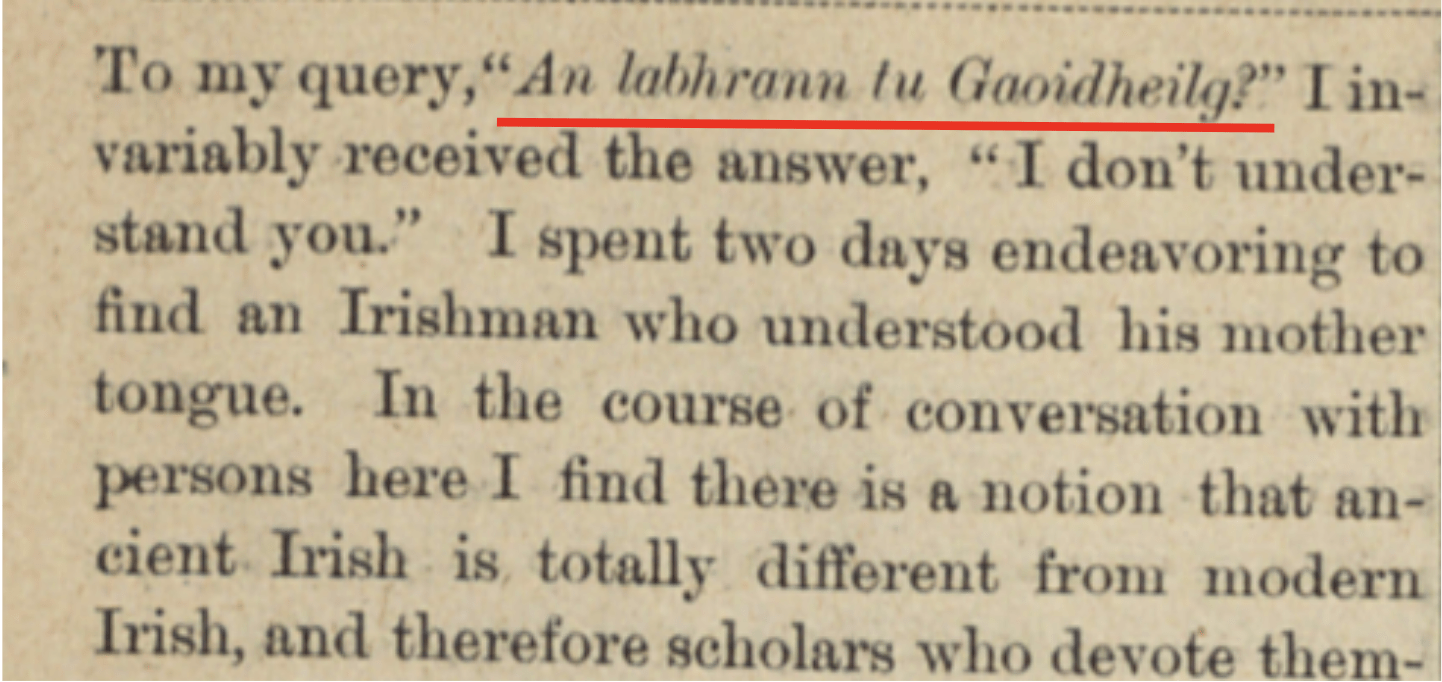

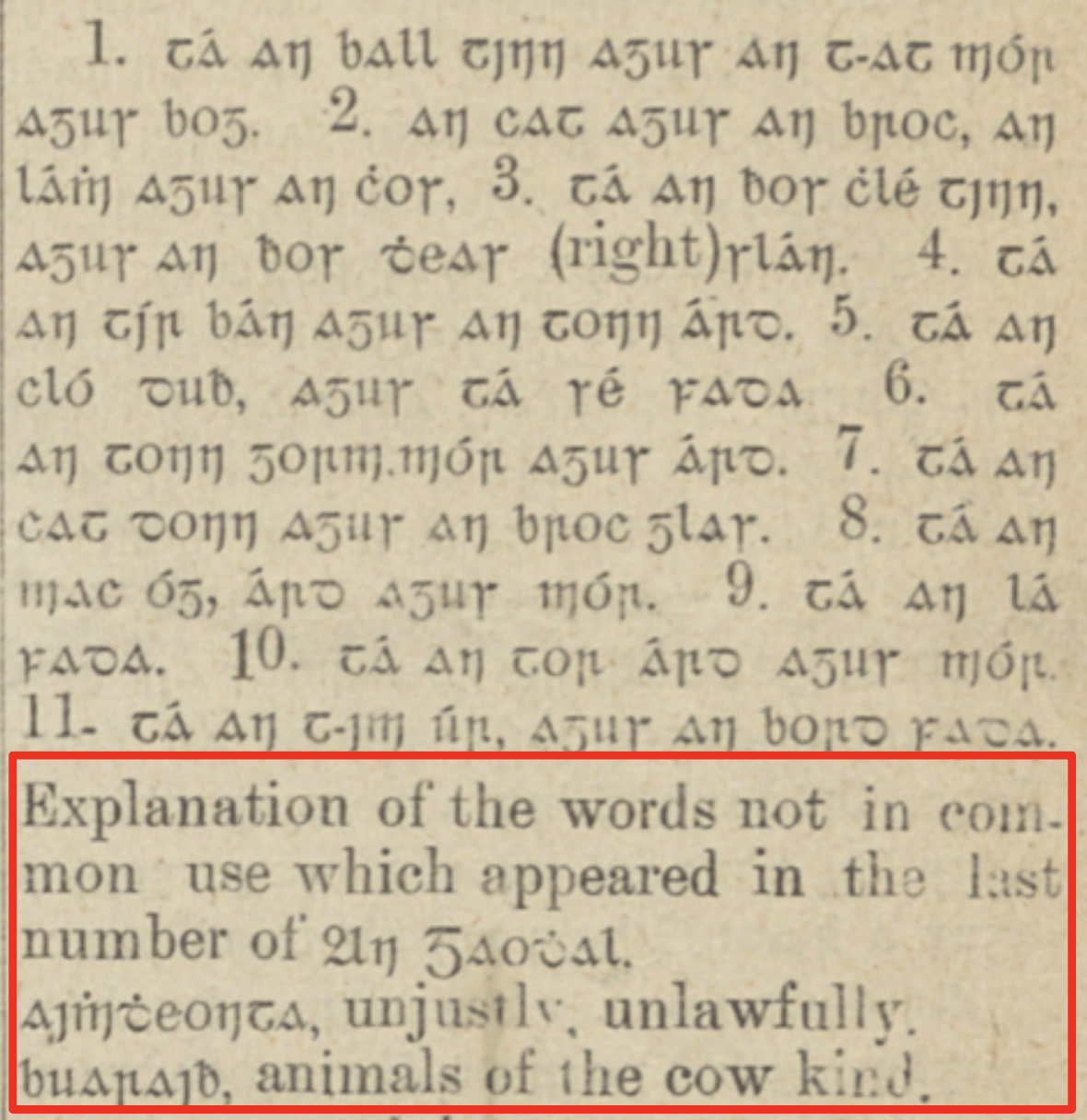
Data Release, December 2023 (CER < 2%)
doi.org/10.58153/5ya5n-mc504
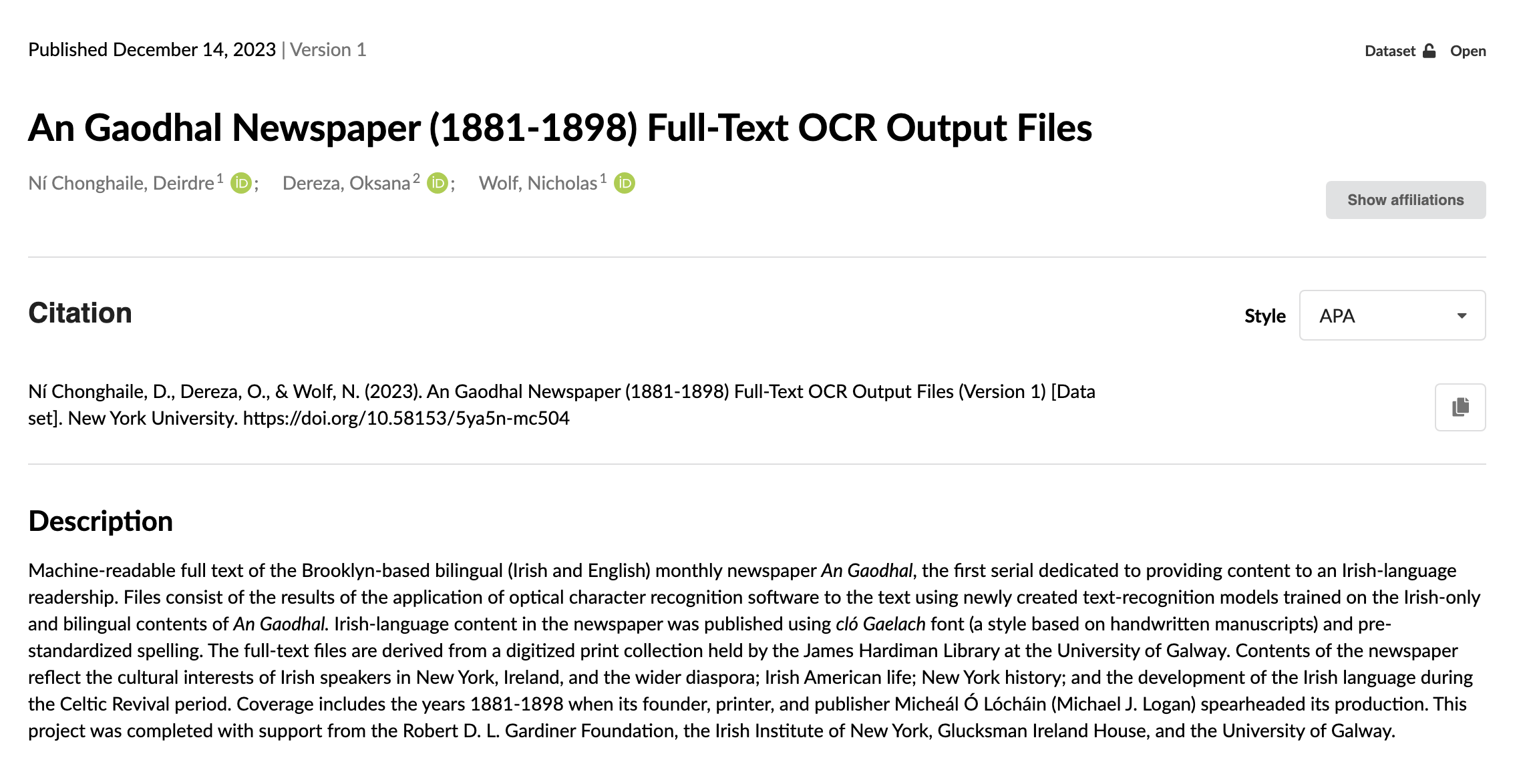
Initial Findings: Cultural Continuity
An Gaodhal 1:1 (1881): “A Dhómhnaill Ui Chonnaill, a d-tuigeann tú Gaedhilge?”
c.f. International Folk Tale Type 1699, language misunderstandings
e.g. NFC 394 (1937, Galway):
“A Dónall Ó Conaill a d’igeann tú Gáedhilge?”
“Tá nimh eir do chopán, & mharóth sé céad ‘ear.”
“Má tá,” adeir Dónall, “ólaid siad héin é.”
“Má’s fíor do scéala tuirai mé spré’ dhuit.”
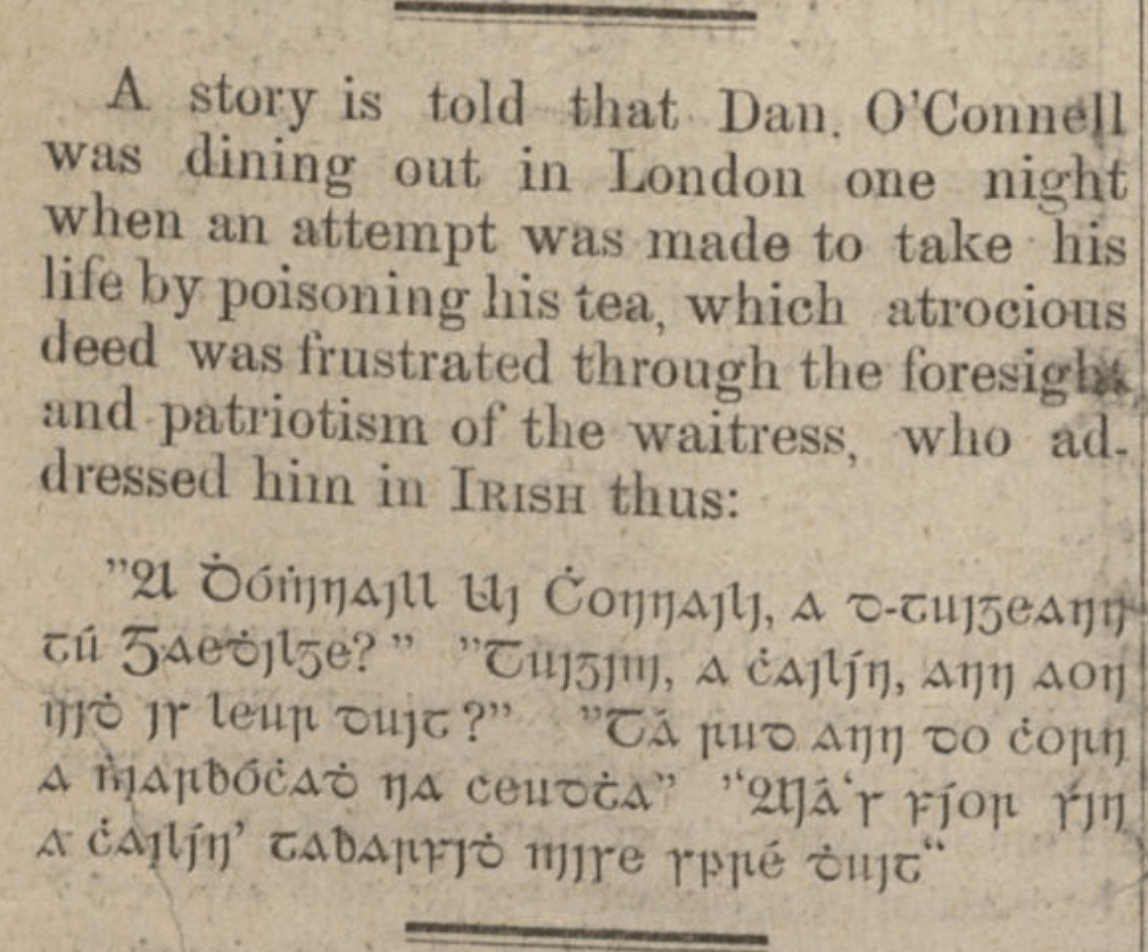
Initial Findings: Named Entity Recognition
Not yet there for the Irish-language tokens...
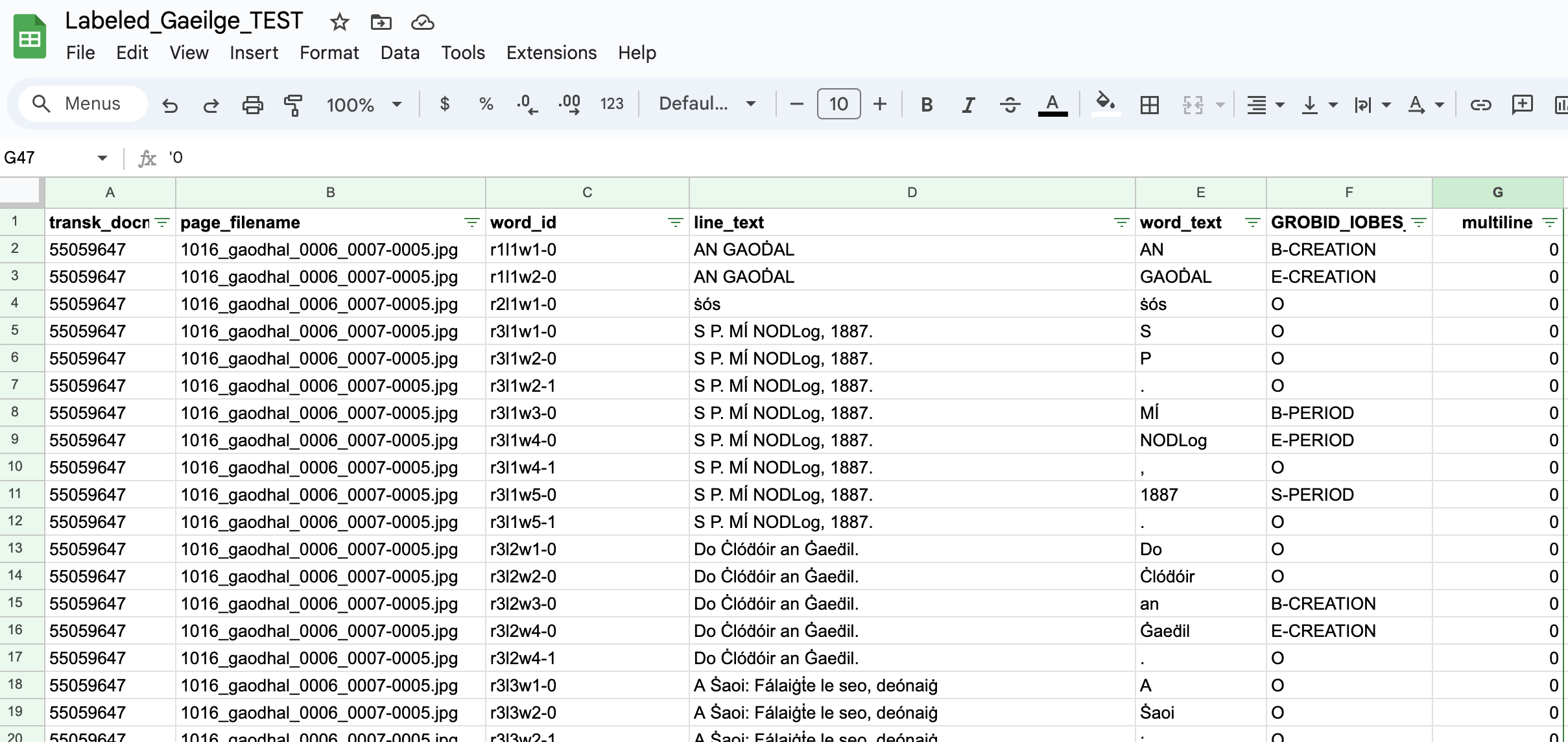
Initial Findings: Named Entity Recognition
But for the English language content:
- ~20,000 non-unique persons identified
- ~1,700 non-unique works of art (close overlap with "canon" of printing in Irish of mid-19th century, i.e. Keating, Thomas Moore, MacHale, learning materials)
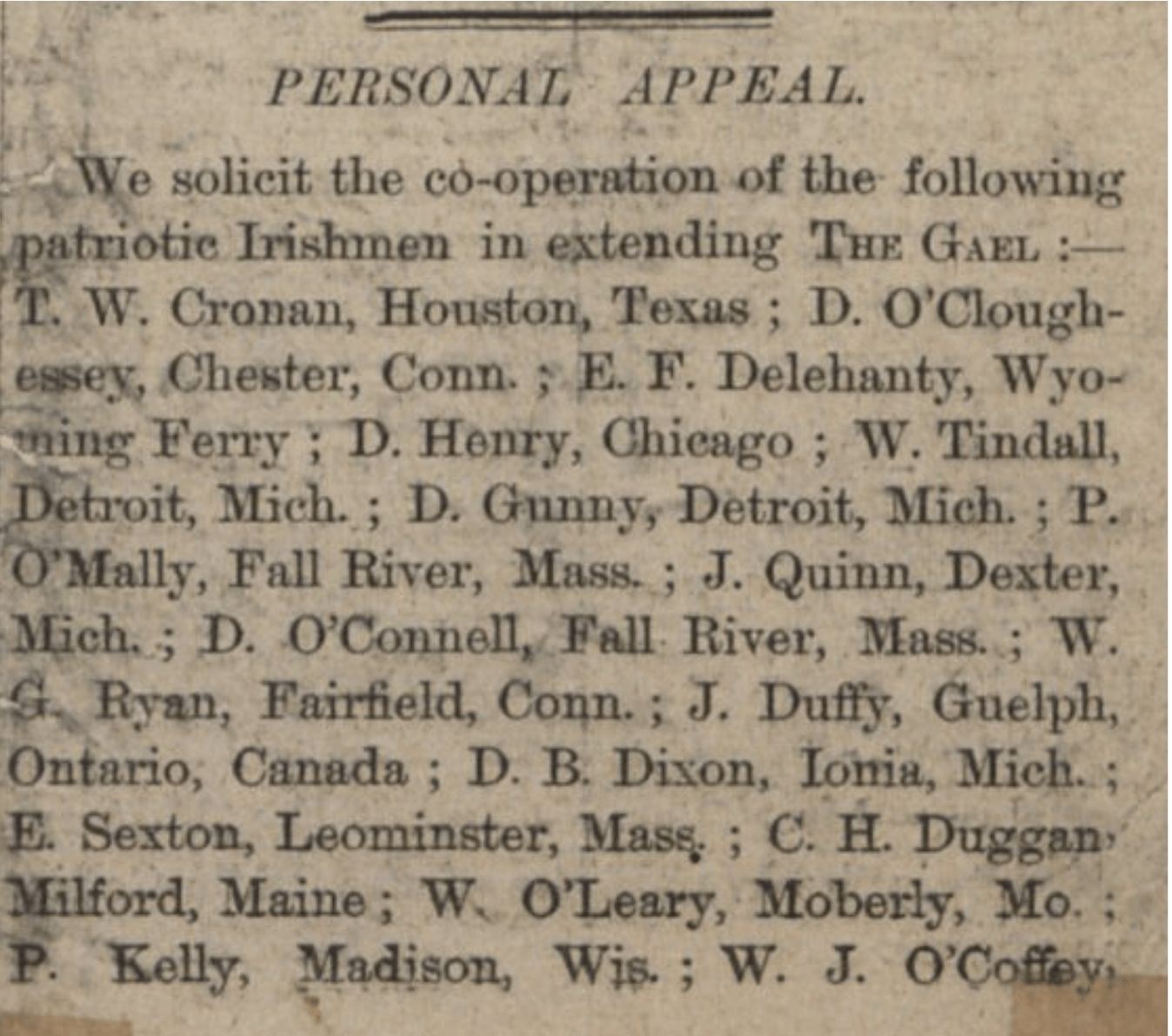
Initial Findings: To Do
- Viral text analysis comparing An Gaodhal to Irisleabhar na Gaedhilge, An Claidheamh Soluis, Gaelic Columns
- Disambiguation of named entities
- Release of Irish-language OCR models for other projects dependent on such technology
- Linkages between "Creation" entities (songs, folklore) and other corpora--especially MS collections
The Emergence of the Global Irish-Speaking Population in the Nineteenth-Century: Implications and Impacts
By Nicholas Wolf
The Emergence of the Global Irish-Speaking Population in the Nineteenth-Century: Implications and Impacts
- 69



